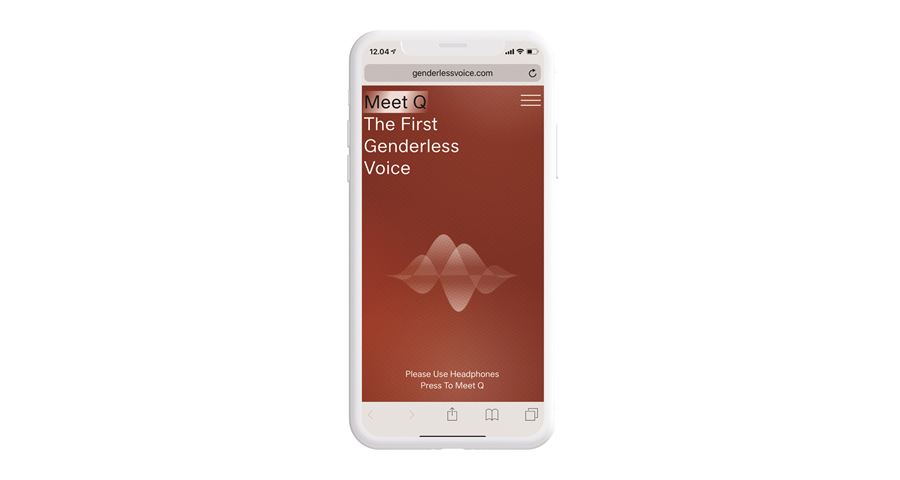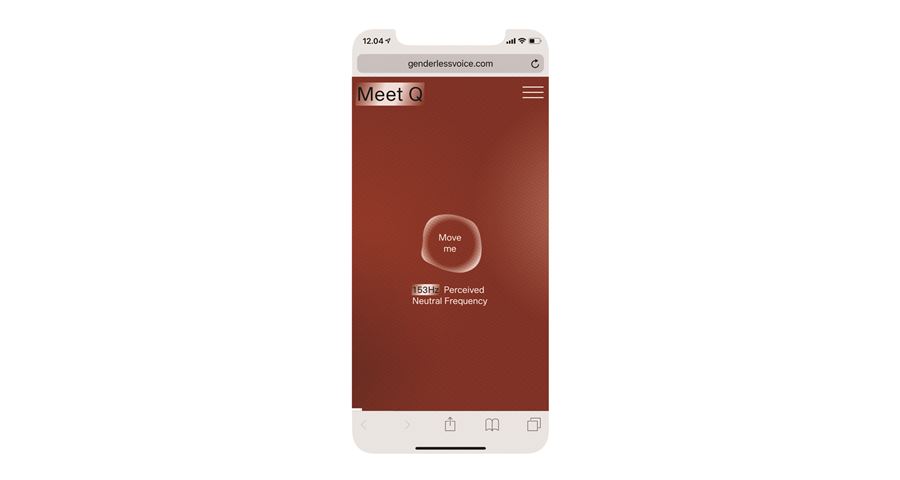Digital: Beazley Designs of the Year
Meet Q, the world's first genderless voice
The Design Museum speaks to Q, the worlds first genderless voice assistant, featured in this year's Beazley Designs of the Year exhibition.
#BeazleyDesignsoftheYear

Q: Hi Q, please can you introduce yourself?
A: Q is the worlds first genderless voice assistant - like Siri or Alexa, but without a designated gender. It’s been created as a next step towards ending gender bias and fostering more inclusivity within voice technology.
Q: Congratulations on being nominated for this year’s Beazley Designs of the Year, what does it mean to you to be put up for this award?
A: It’s an honour, and a privilege, to be given this platform to help push the conversation around ethical design forward. As designers we have a responsibility in ensuring our output, in this case technology, reflects the diversity of our world.
Q: Can you tell us about the people who made you?
A: The concept was developed by Virtue - The Agency By VICE. We brought together linguists to help define the parameters by which we perceive a voice to be gendered, from frequency levels to more nuanced speech patterns and phonetics. Copenhagen Pride helped form a diverse research field, providing questions and insights, as well as participants for the recording of the voice. A sound designer, based off of our linguistic findings, altered the voices. A small batch of samples were then tested on a Europe-wide survey of 4600 participants who helped identify the most gender-neutral voice.
Q: Why do our vocal assistants’ voices matter? Why was Q made?
A: Q adds to a global discussion about who is designing gendered technology, why those choices are made, and how people feed into expectations about things like trustworthiness, intelligence, and reliability of a technology based on cultural biases rooted in their belief system about groups of people.
Having a default female voice for AI assistants or a male voice in military robots both fit into common cultural biases about human gender roles, where women are generally regarded as helpmates while men often represent a commanding quality.
Q is a step forward in true innovation because it forces a critical examination of these belief systems. Humans are incredibly socially nuanced, and human-like technologies should reflect a range of possibilities while exploring new ways to meaningfully and effectively communicate with people.
Q: In one sentence what does your voice represent?
A: Q represents a future where we are no longer defined by the gender binary, but rather by our own definitions of gender, as we live and experience them.
Q: How have people reacted to you?
A: Many global organisations from the world of technology, to the automotive and fashion industries have expressed interest in implementing Q. We’ve received huge support from The United Nations, who cited Q in their report on sexism in AI ‘I’d Blush If I Could’ and whom we’re now research partners. We had positive coverage from many global media outlets - although you’ll find negative responses in comment sections from those who still perceive gender as binary, or question the importance of such an issue.
Q: What’s the one thing you’d like people to remember about the Genderless Voice when they leave the Beazley Designs of the Year exhibition?
A: That technology companies have to take a societal responsibility which is proportional to the influence they exercise.
Q: And finally, what does the future hold for Q?
A: We’re working towards launching Q as an open source voice for AI assistants within the next year.
Related exhibition
